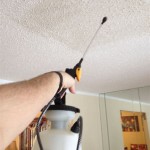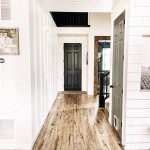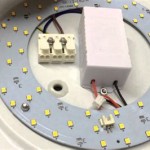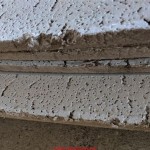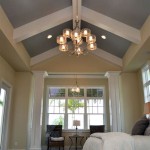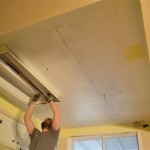Are High Ceilings Bad for Acoustics? A Reddit Discussion
High ceilings are often sought after for their aesthetic appeal, imparting a sense of grandeur and spaciousness to a room. However, many homeowners and designers are increasingly aware that these lofty heights can negatively impact acoustics. This is a common topic of discussion on Reddit, where users share their experiences and seek advice on tackling the challenge of sound in spaces with high ceilings.
The concern is not unfounded. High ceilings can create what is known as "dead space," where sound waves travel longer distances before encountering surfaces. This can lead to a number of acoustical problems, including excessive reverberation, poor speech intelligibility, and a lack of warmth and intimacy in the sound. While these issues may not be apparent in small spaces, they can become increasingly noticeable in larger rooms with high ceilings, such as auditoriums, conference halls, and even living rooms.
The Science Behind the Problem
Understanding the science behind the issue can help explain why high ceilings pose acoustical challenges. Sound waves travel as vibrations through the air, reflecting off surfaces they encounter. In rooms with high ceilings, these waves have more space to travel and reflect before reaching our ears. This results in longer reverberation times, meaning that sounds persist longer in the space.
The reverberation time is a critical factor in determining the acoustics of a room. A space with a long reverberation time will have a "live" sound, where sounds blur together and become difficult to understand. On the other hand, a room with a short reverberation time is considered "dead," with sounds being absorbed quickly and resulting in a more muffled sound. The ideal reverberation time varies depending on the intended use of the room, with spaces like concert halls aiming for longer times and spaces like classrooms aiming for shorter times.
Addressing the Acoustical Challenges of High Ceilings
While high ceilings can present acoustical challenges, they are not insurmountable. There are various strategies that can be employed to improve the acoustics of spaces with high ceilings. These strategies can be broadly categorized as follows:
1. Acoustical Treatments
Acoustical treatments involve the use of materials that absorb or reflect sound waves to manage reverberation and improve sound quality. Common acoustical treatments include:
- Acoustic Panels: These are often made of foam or fiberglass and are designed to absorb sound energy, reducing reverberation. They can come in various shapes, sizes, and finishes to integrate seamlessly with the interior design.
- Sound Diffusers: These panels scatter sound waves, preventing them from reflecting directly back to the listener. They are particularly effective in controlling reflections from hard surfaces like walls and ceilings.
- Carpet and Drapes: Soft surfaces like carpets, drapes, and upholstery can help absorb sound waves, reducing reverberation and improving sound quality. This is especially important for spaces with hard floors and walls.
- Ceiling Clouds: These are suspended panels that can be installed on the ceiling to absorb sound and improve acoustics. They are particularly effective in large rooms with high ceilings and can also contribute to a more visually appealing aesthetic.
2. Architectural Design Considerations
Architectural design can play a significant role in mitigating the acoustic issues associated with high ceilings. Some strategies include:
- Varying Ceiling Heights: Creating a series of "bump-outs" or lower-ceilinged areas within a high-ceilinged space can break up the sound waves, reducing reverberation. This approach is particularly effective in open-plan spaces.
- Introducing Architectural Features: Architectural elements like balconies, mezzanines, and alcoves can create natural sound barriers and help to reduce reverberation. These features can also add visual interest to the space.
- Using Soft Surfaces: Incorporating soft surfaces like wood paneling, textured plaster, or fabric-covered walls can help absorb sound and reduce reverberation. This is especially important in spaces with a lot of hard surfaces like concrete or glass.
3. Proper Sound System Design
In spaces where sound reproduction is important, such as auditoriums or home theaters, proper sound system design is crucial. This includes:
- Speaker Placement: Speakers should be strategically placed to ensure optimal sound distribution and minimize reflections from surfaces.
- Sound System Calibration: Professional calibration of the sound system can help optimize the performance and reduce unwanted echoes or reverberation.
- Sound Absorption: Using acoustic treatments like panels or baffles around the speakers can help absorb unwanted reflections and improve the overall sound quality.
By implementing these strategies, homeowners and designers can effectively address the acoustic challenges posed by high ceilings, creating spaces that are both aesthetically pleasing and acoustically comfortable.

Need Advice For Poor Acoustics In High Ceiling Living Room R Hometheater

The 5 Best Acoustic Panels For Rooms And Studios Resonics

Acoustic Panels For Your Recording Studio Resonics

How Much Value Do Higher Ceilings Add To A Home Sacramento Appraisal Blog

Where To Install Acoustic Panels Resonics Acoustics

How To Reduce Noise In A Room With High Ceiling Primacoustic

Why You Need Acoustic Panels For Your Home Office Resonics

Acoustic Treatment And Soundproofing For Home Theaters My Site

Where To Install Acoustic Panels Resonics Acoustics
Related Posts

